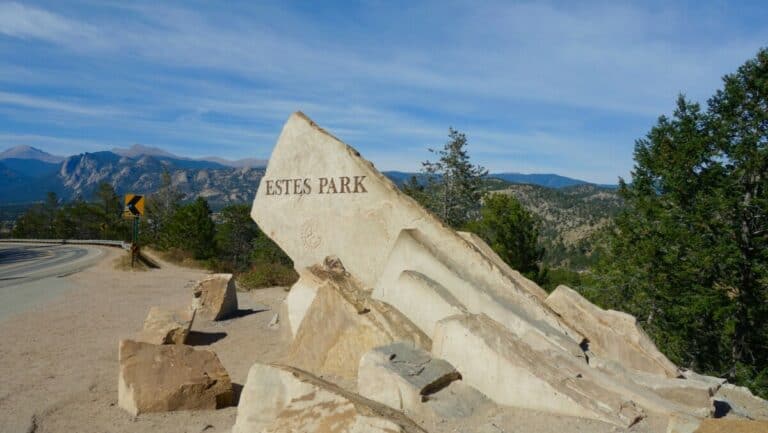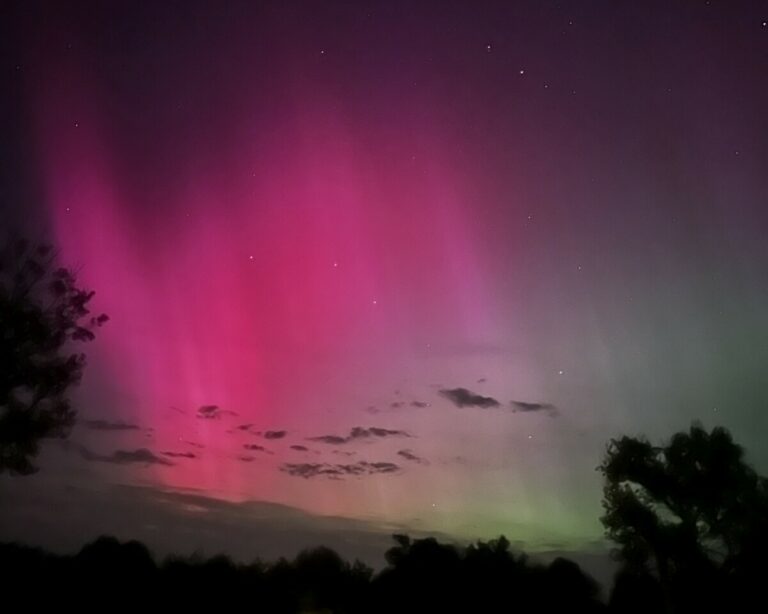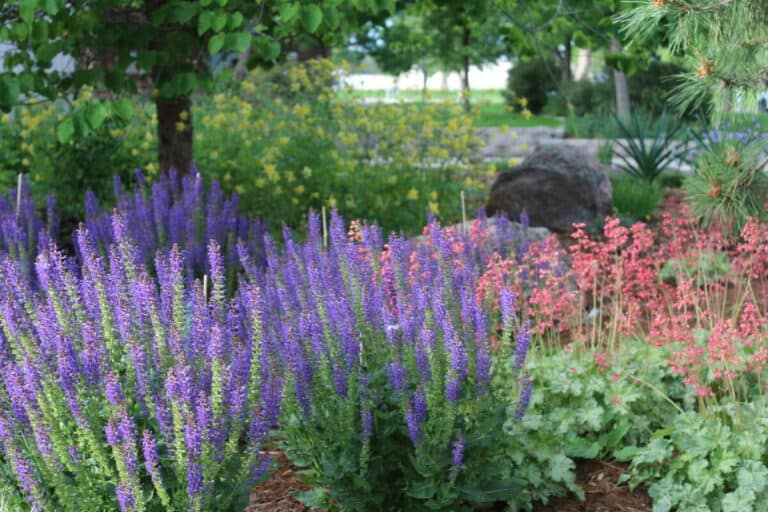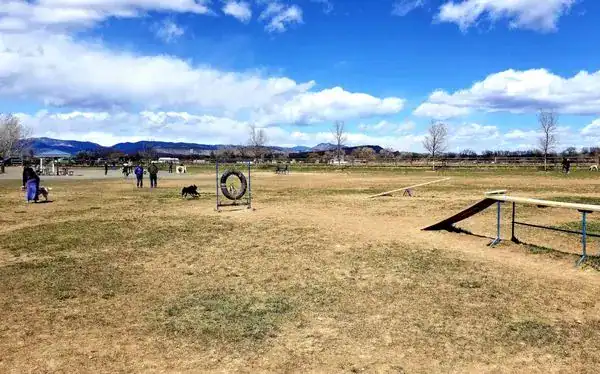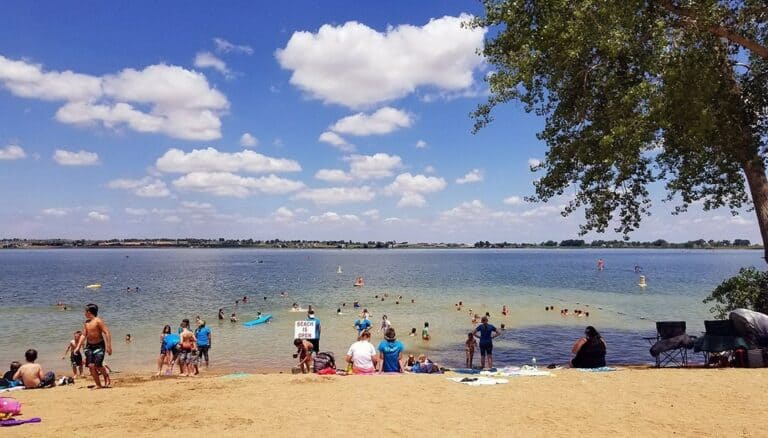Are There Moose in Colorado? Where to See Colorado’s Moose Population
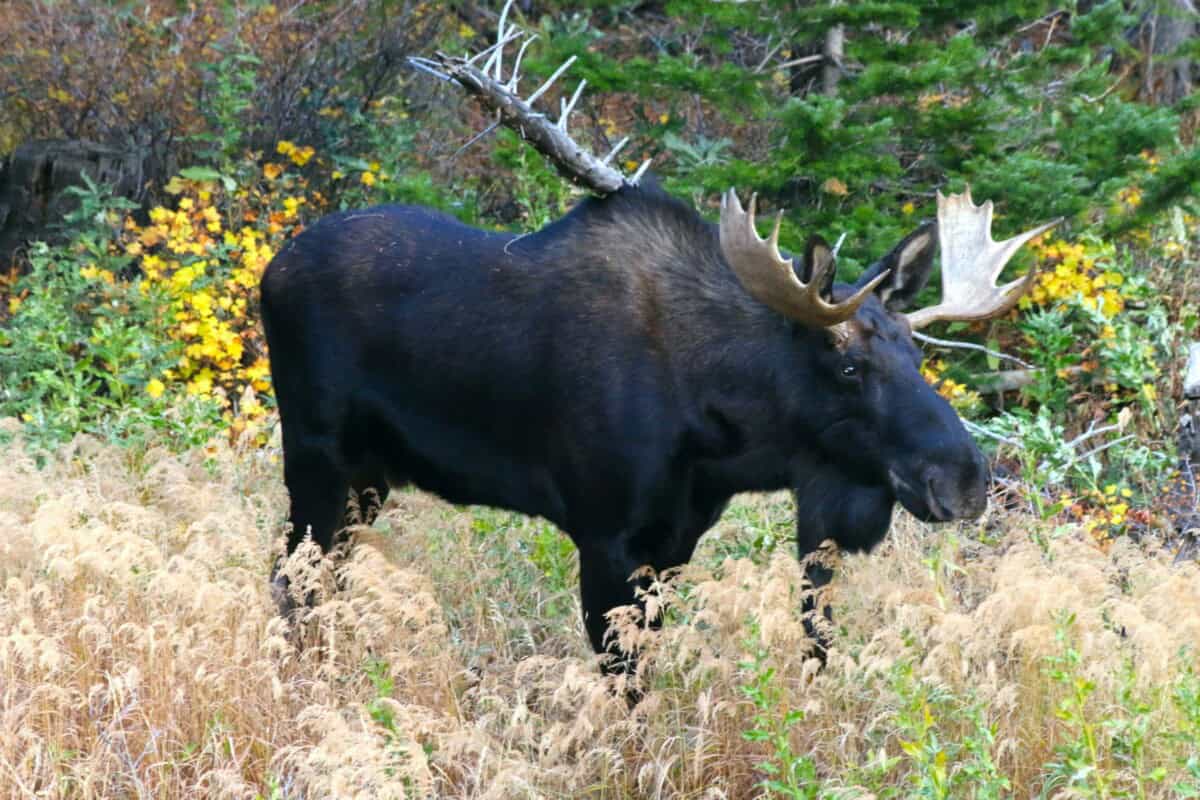
You’ve probably heard a rustling noise during a hike in the mountains and suddenly wondered, are there moose in Colorado? Yes, there are! With growing populations roaming the state, moose sightings are increasingly common in mountain towns, wetlands, and high-elevation forests.
Whether you’re hiking near Grand Mesa or driving through North Park, it’s not unlikely that you might encounter these huge, elusive animals.
Colorado Moose Population & History
Are Moose Native to Colorado?
Despite their iconic presence today, moose are not native to Colorado. They were introduced in 1978, when 24 of them were relocated from Utah and Wyoming to the North Park region. This move was driven by ideal habitat conditions and growing public interest in big-game viewing and hunting, which promised increased revenue for Colorado Parks & Wildlife.
How Many Moose Are in Colorado?
Today, the Colorado moose population is estimated to be around 3,000. They are primarily found in mountain ranges where willow is abundant, one of the moose’s main food sources.
With plenty of food and few natural predators, the population has expanded steadily across western and northern parts of the state.
Where to See Moose in Colorado
Moose are commonly found in riparian zones, wetlands, and high-elevation valleys.
They thrive in willow-rich environments, especially near lakes, rivers, and marshes where food and cover are abundant. These are a few of the main places where you would be most likely to spot a moose in colorado:
North Park Region
The site where moose were originally introduced in the 1970s, over 700 moose now roam the North Park region. Top viewing spots include State Forest State Park, known as Colorado’s moose capital, and the Arapaho Wildlife Refuge.
Rocky Mountain National Park
Moose are most active on the park’s west side, especially in Kawuneeche Valley and near Sprague Lake. It is estimated that around 40 to 60 moose now reside here, with sightings increasing annually.
A Photographer’s Guide to Rocky Mountain National Park ➔
Grand Mesa & Gunnison Areas
Grand Mesa supports a population of roughly 400 moose that were introduced in the early 2000s. They are also found farther south in Hinsdale County and the San Juan Mountains, making this the southernmost moose habitat in the world.
Moose in Colorado Map
The MooseConcentrationArea map shows parts of Colorado where moose gather in especially high numbers (about twice as many as surrounding areas) during certain seasons. It helps field researchers identify key spots where moose are most active.
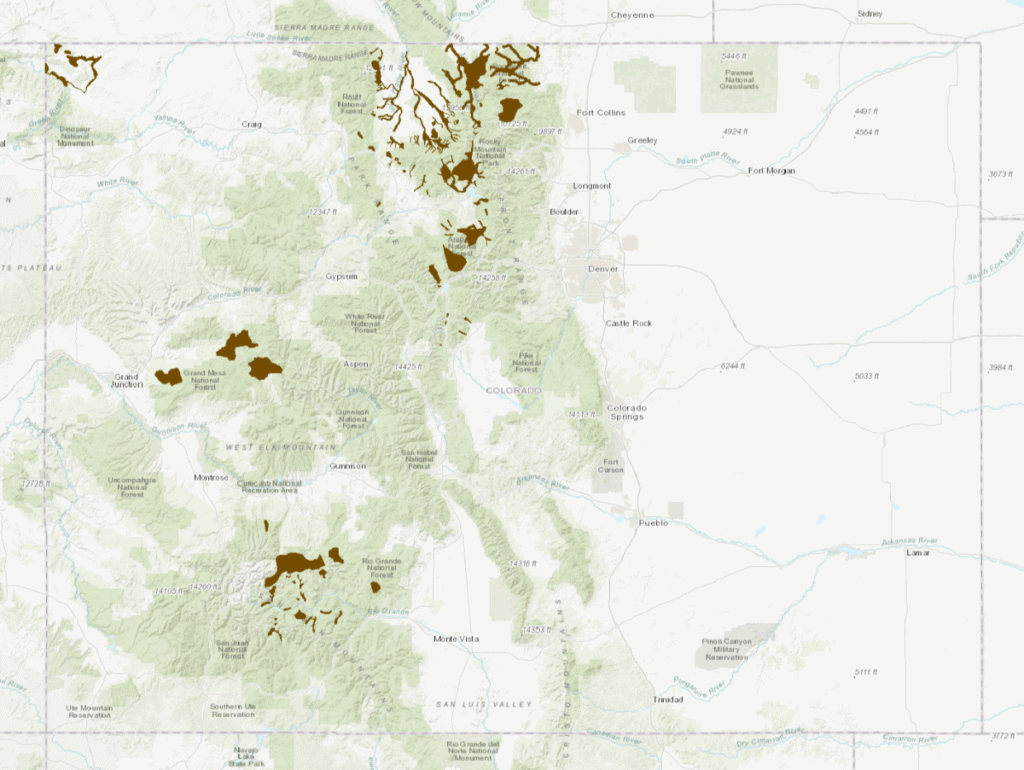
The data was collected by wildlife staff using a mix of tools, including hand-drawn maps and digital mapping boards. It was originally created by Colorado wildlife officials and later shared by a third-party distributor in 2011.
Moose and Human Interaction
Best Times to Spot Moose
Your best chance at seeing a moose is at dawn or dusk. Sightings are also most frequent from spring through fall, when moose are actively feeding and are more mobile.
Tips for Spotting Moose Safely
However, moose are unpredictable and can become aggressive, especially when they are startled or are protecting their young. They now cause more attacks each year than bears or mountain lions in Colorado.
In 2022, there were 59 moose-vehicle collisions, along with several serious injuries from encounters on trails. With this in mind, it is important to be cautious when interacting with moose:
- Always view moose from a distance
- Keep dogs away – they can trigger aggression
- Don’t block trails or roads, and respect wildlife and other visitors
Moose in Cities
Moose sightings are rising in suburban areas, including Denver, often near parks, greenbelts, and golf courses. As development expands into moose habitat, human-wildlife conflicts are becoming more frequent and dangerous.
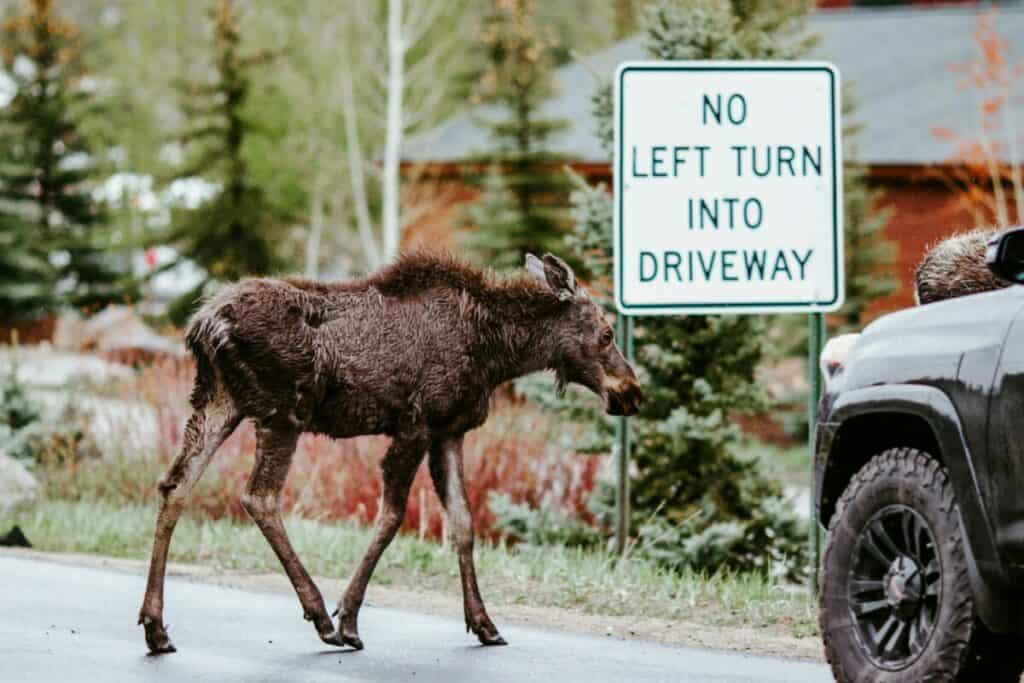
Moose, Ecosystems & Conservation
Environmental Impact
Moose consume large amounts of willow, which is a key plant in riparian ecosystems. This heavy browsing reduces habitat quality for songbirds, fish, and insects, and can lead to streambank erosion and long-term vegetation loss in sensitive areas like Rocky Mountain National Park.
Managing Moose Populations
To protect ecosystems, land managers are exploring population control methods:
The National Park Service may use contraceptives to prevent moose from becoming pregnant or, if necessary, resort to culling, selectively killing moose to control population growth. Colorado Parks & Wildlife also issues a limited number of moose hunting tags each year.
The reintroduction of wolves, a natural predator of moose, in 2023 may help regulate moose numbers over time. Wolves, by the way, are native to Colorado, but by 1940 had been hunted to near zero.
Can You Hunt Moose in Colorado?
Hunting Regulations
Yes, but moose hunting in Colorado is strictly regulated. Hunting tags are limited and issued through a lottery system managed by Colorado Parks & Wildlife (CPW) to maintain a healthy population level. This controlled approach helps prevent overbrowsing, protects ecosystems, and generates conservation funding through licensing fees.
Conservation Ethics
Hunting is a controversial management tool. While some view it as necessary for balancing ecosystems, others argue for non-lethal methods. Many residents and visitors prefer wildlife viewing, which creates social pressure to maintain high moose numbers instead of reducing them.
FAQs
Do moose live in Colorado?
Yes, Colorado is home to an estimated 3,000 moose, mostly found in mountain ranges with lush wetlands and riparian zones. Their numbers have grown steadily since their introduction in the late 1970s.
Where is the best place to see moose in Colorado?
Some of the best places to see moose in Colorado are in North Park, State Forest State Park, Rocky Mountain National Park, and Grand Mesa.
What is the deadliest animal in Colorado?
While not predators, moose may be the deadliest large animal in the state. Moose now cause more annual attacks than bears or even mountain lions.
How do moose affect the ecosystem?
Moose consume large amounts of willow, reducing food and shelter for other species. This can degrade riparian habitats over time.
What should I do if I see a moose?
Keep a safe distance, stay calm, and avoid bringing dogs, which can trigger defensive behavior.


